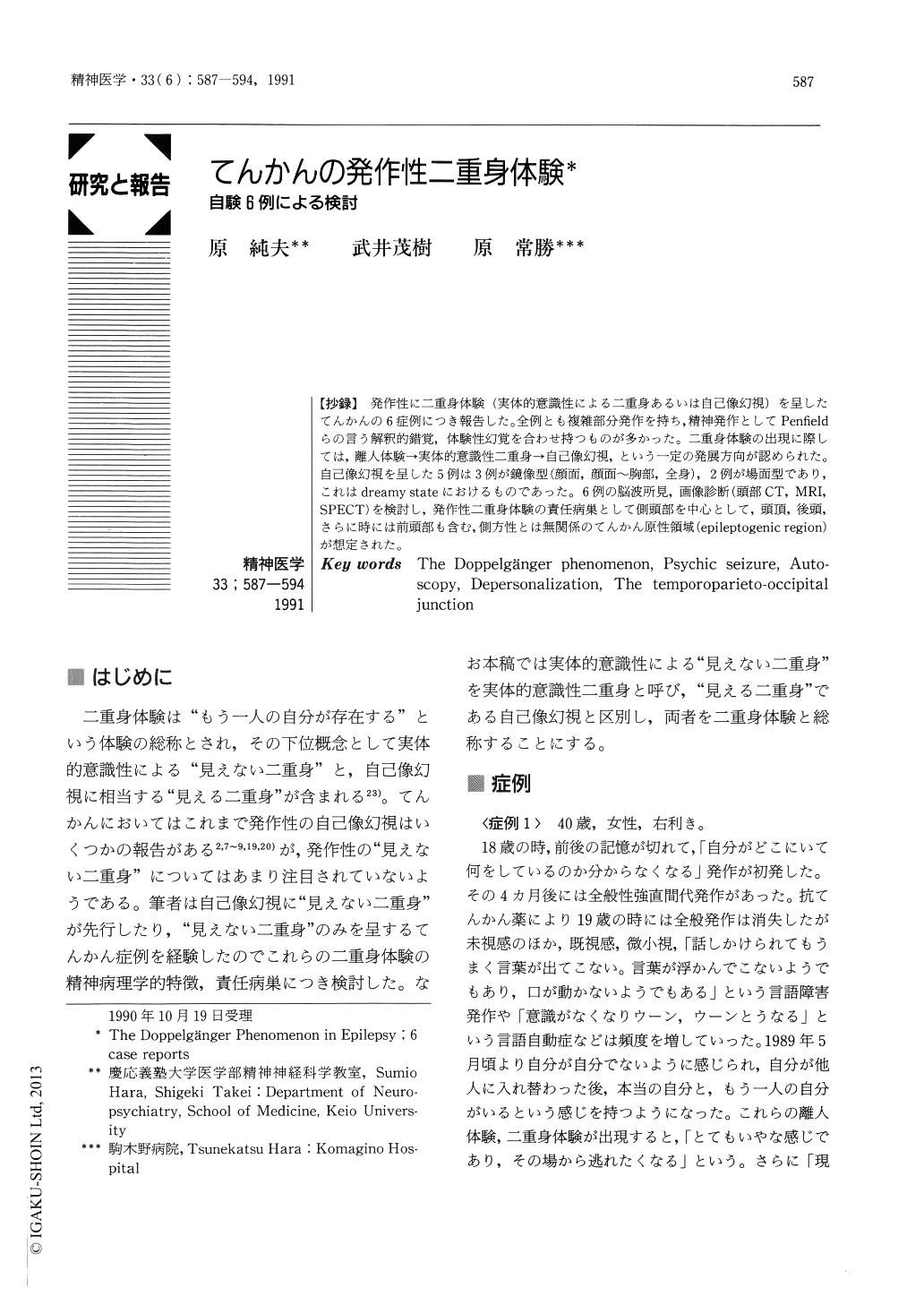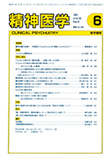Japanese
English
- 有料閲覧
- Abstract 文献概要
- 1ページ目 Look Inside
【抄録】発作性に二重身体験(実体的意識性による二重身あるいは自己像幻視)を呈したてんかんの6症例につき報告した。全例とも複雑部分発作を持ち,精神発作としてPenfieldらの言う解釈的錯覚,体験性幻覚を合わせ持つものが多かった。二重身体験の出現に際しては,離人体験→実体的意識性二重身→自己像幻視,という一定の発展方向が認められた。自己像幻視を呈した5例は3例が鏡像型(顔面,顔面〜胸部,全身),2例が場面型であり,これはdreamy stateにおけるものであった。6例の脳波所見,画像診断(頭部CT,MRI,SPECT)を検討し,発作性二重身体験の責任病巣として側頭部を中心として,頭頂,後頭,さらに時には前頭部も含む,側方性とは無関係のてんかん原性領域(epileptogenic region)が想定された。
Six cases of epilepsy with the Doppelgänger phenomenon (the apparition of the double) were reported. All but one of the cases had psychic seizures such as deja vu, jamais vu and visual or auditory illusion and hallucination, as well as complex partial seizures.
The double either could be felt (a feeling of being in the presence of the double) or seen (autoscopy). Five cases with autoscopy were further divided into two types, that is, one in which the double is seen as if in a mirror (3 cases) and the other, a dreamy state in which the double is seen in a remembered scene (2 cases).
On the whole, depersonalization came first. It was followed by a feeling of being in the presence of the double, after this feeling, autoscopy was experienced.
As for epileptogenic regions responsible for the Doppelganger phenomenon, irrespective of laterality, not only the temporal, but also the parietal, occipital and sometimes even the frontal lobe played a part.

Copyright © 1991, Igaku-Shoin Ltd. All rights reserved.


